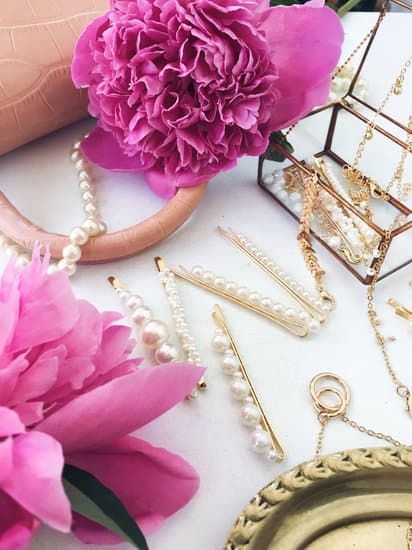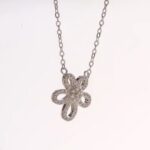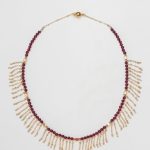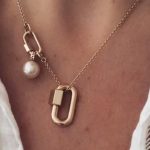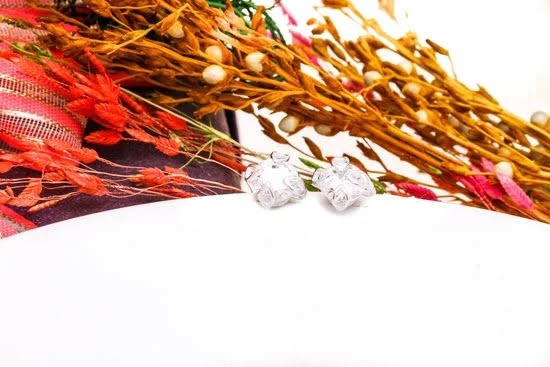Mother of pearl, a material known for its iridescent beauty, has played a significant role in the history of jewelry making. From ancient times to modern day, mother of pearl has been prized for its lustrous appearance and durability, making it a popular choice for adorning various jewelry pieces.
The origins of mother of pearl in jewelry history can be traced back to ancient civilizations, where it was revered for its natural elegance and believed to possess mystical properties. Throughout the Renaissance period, this exquisite material adorned the regal crowns and extravagant adornments of European royalty, symbolizing wealth and sophistication.
Across different cultures, mother of pearl holds great symbolism and significance, often representing purity, protection, and prosperity. The meticulous techniques and processes involved in crafting mother of pearl jewelry have been passed down through generations, preserving the artistry and tradition behind these luxurious pieces.
As we delve into the rich history of mother of pearl in jewelry making, we gain a deeper appreciation for its timeless beauty and legacy. This article will explore the origins of mother of pearl, its historical use in ancient jewelry, cultural symbolism, craftsmanship techniques, famous pieces throughout history, modern trends and designs, as well as the sustainability and ethical considerations surrounding its use in jewelry today.
The Origins of Mother of Pearl and Its Use in Ancient Jewelry
Mother of pearl, also known as nacre, has been used in jewelry making for centuries and holds a special place in the history of adornment. This iridescent material is formed from the lining of mollusk shells, particularly those of certain species of oysters and abalones. The use of mother of pearl in jewelry dates back to ancient times, with evidence of its use found in archaeological sites across the world.
In ancient civilizations such as Egypt, Mesopotamia, and China, mother of pearl was highly prized for its lustrous beauty and was used to create intricate pieces of jewelry. Its natural iridescence made it a symbol of purity and elegance, often worn by royalty and elites as a status symbol. The luminescent quality of mother of pearl made it a desirable material for creating amulets, talismans, and religious ornaments believed to have protective powers.
The process of incorporating mother of pearl into ancient jewelry involved skilled craftsmanship and meticulous attention to detail. Artisans would carefully cut and shape the delicate material to create beads, inlays, and other decorative elements for jewelry pieces.
These early examples showcase the enduring appeal and versatility of mother of pearl in ancient jewelry making practices. The significance placed on mother of pearl in ancient societies is a testament to its enduring legacy as a cherished material in the history of jewelry making.
Mother of Pearl in Jewelry During the Renaissance Period
During the Renaissance period, mother of pearl became highly sought after and was used in a variety of jewelry pieces. The increased interest in this lustrous material can be attributed to the revival of classical art and culture during this time. Mother of pearl was often paired with other gemstones such as diamonds, rubies, and sapphires to create elaborate and luxurious jewelry pieces that were favored by the nobility and upper class.
One of the most notable uses of mother of pearl during the Renaissance was in cameo jewelry. Carving intricate designs into layers of mother of pearl became popular, with craftsmen creating stunning portraits and mythological scenes on brooches, pendants, and rings. These exquisite pieces were highly valued not only for their beauty but also for their intricate craftsmanship.
Furthermore, mother of pearl was also used in rosary beads and religious artifacts during the Renaissance period. Its luminous quality made it a fitting material for creating sacred objects, and its use in religious jewelry further contributed to its symbolism as a divine and precious material.
Overall, the Renaissance period marked a flourishing era for mother of pearl in jewelry making. Its use in elaborate designs, exquisite carvings, and religious artifacts solidified its place as a cherished material within the history of jewelry making.
| Notable Uses | Characteristics |
|---|---|
| Used in cameo jewelry | Luminous quality |
| Used in religious artifacts | Intricate craftsmanship |
The Symbolism and Significance of Mother of Pearl in Different Cultures
Mother of Pearl has been a significant material in jewelry-making across various cultures, each one attributing its own symbolism and significance to this lustrous substance. In many Eastern cultures, mother of pearl is associated with luck, protection, and prosperity.
It is often used in amulets and talismans to ward off negative energy and bring good fortune to the wearer. The iridescent quality of mother of pearl is believed to reflect the ever-changing nature of life and symbolizes the harmony between yin and yang.
In Western cultures, mother of pearl has been historically linked to purity and femininity. Its name itself suggests a connection to motherhood, making it a popular choice for mothers’ jewelry such as pendants or earrings. In Christianity, mother of pearl is sometimes used as an emblem of the Virgin Mary due to its radiant and ethereal appearance.
In Polynesian culture, particularly among the Maori people of New Zealand, mother of pearl holds great significance. Known as “paua shell” in Maori culture, it is highly prized for its vibrant hues that symbolize the sea and the creatures that live within it. Paua shell is used in traditional carvings and jewelry as an homage to the ocean’s bounty and as a representation of strength and resilience.
| Culture | Symbolism |
|---|---|
| Eastern Cultures | Luck, protection, prosperity |
| Western Cultures | Purity, femininity |
| Polynesian Culture (Maori) | Sea, strength, resilience |
Techniques and Processes in Crafting Mother of Pearl Jewelry
Mother of pearl has been used in jewelry for centuries, and the techniques and processes involved in crafting mother of pearl jewelry have evolved over time. The stunning iridescence and luminescence of mother of pearl make it a prized material for creating exquisite pieces of jewelry. Here are some techniques and processes used in crafting mother of pearl jewelry:
- Harvesting: Mother of pearl is harvested from the inner lining of certain mollusk shells, such as abalone, pearl oysters, and freshwater mussels. The shells are carefully collected and then processed to extract the mother of pearl material.
- Shaping and Cutting: Once harvested, the mother of pearl is shaped and cut into various forms using specialized tools such as saws, drills, or cutting wheels. Craftsmen must exercise precision and skill to achieve the desired shapes and sizes for their designs.
- Carving and Engraving: Artisans often carve intricate designs or engrave patterns onto the smooth surface of mother of pearl. This meticulous process requires patience and expertise to create detailed motifs or images with precision.
In addition to these traditional techniques, modern advancements in technology have also influenced the crafting of mother of pearl jewelry. For example, laser cutting machines can be used to create intricately detailed designs on mother of pearl with incredible accuracy. These technological innovations have expanded the creative possibilities for designers and artisans working with this beautiful material.
Moreover, other processes such as inlaying, setting stones into mother of pearl settings, or combining it with other materials like gold or silver have also become common practices in crafting mother of pearl jewelry. These techniques allow for the creation of unique and stylish pieces that showcase the timeless beauty and luster of this natural material.
Overall, the craftsmanship involved in creating mother of pearl jewelry reflects a deep appreciation for its unique qualities and has contributed to its enduring popularity throughout history.
Famous Pieces of Mother of Pearl Jewelry Throughout History
Throughout history, mother of pearl has been used in a variety of jewelry pieces, with some famous examples standing out for their beauty and significance. From ancient civilizations to modern times, mother of pearl has been revered for its lustrous sheen and timeless appeal. Let’s explore some of the most iconic pieces of mother of pearl jewelry throughout history.
Antique Chinese Mother of Pearl Necklaces
In ancient China, mother of pearl was often used to create exquisite necklaces that were adorned by royalty and members of the upper class. These necklaces featured delicately carved mother of pearl beads and pendants, often combined with precious metals and gemstones. The intricate designs and craftsmanship of these pieces reflected the importance placed on mother of pearl in Chinese culture.
The Fabergé Easter Eggs
One of the most famous uses of mother of pearl in jewelry can be seen in the renowned Fabergé Easter Eggs created for the Russian royal family. These ornate eggs, crafted by Peter Carl Fabergé, were often adorned with mother-of-pearl inlays that added a touch of ethereal beauty to the already exquisite creations. The use of mother of pearl in these eggs elevated their value and ensured that they became treasured heirlooms.
Tiffany & Co. Mother of Pearl Jewelry
In more recent history, the prestigious jewelry house Tiffany & Co. has also incorporated mother of pearl into their designs, creating elegant pieces that have become iconic in their own right. From delicate earrings to statement necklaces, Tiffany & Co.’s use of mother-of-pearl continues to captivate jewelry enthusiasts around the world.
These examples are just a few among countless others that showcase the enduring allure and significance of mother-of-pearl in jewelry history. From ancient China to Imperial Russia and beyond, this iridescent material has left an indelible mark on the world’s most magnificent jewels.
Modern Trends and Designs in Mother of Pearl Jewelry
In the modern era, mother of pearl jewelry continues to be a popular choice for those seeking timeless beauty and elegance. While traditional designs remain popular, contemporary jewelry makers are also creating innovative and modern pieces that showcase the unique luster and iridescence of mother of pearl.
Minimalist Designs
One modern trend in mother of pearl jewelry is minimalist designs. Jewelry designers are incorporating mother of pearl into simple, sleek settings to create pieces that exude understated sophistication. Whether it’s a dainty pendant or a pair of stud earrings, these minimalist designs highlight the natural beauty of the material without overwhelming the wearer.
Statement Pieces
On the other end of the spectrum, there is a growing trend for bold statement pieces featuring mother of pearl. From chunky bracelets to oversized cocktail rings, these striking pieces are designed to make a statement and capture attention. The iridescence of mother of pearl lends itself well to creating eye-catching jewelry that demands admiration.
Experimentation With Color
Another exciting development in modern mother of pearl jewelry is experimentation with color. While classic white and off-white hues remain popular, designers are starting to explore dyed and treated variations of mother of pearl to create jewelry in a rainbow of colors. This allows for greater versatility in design and provides options for those who prefer more vibrant accessories.
As we move further into the 21st century, it’s clear that mother of pearl continues to inspire artists and designers to create stunning and diverse jewelry pieces that reflect both tradition and innovation. With its timeless allure, this iridescent material will undoubtedly remain an enduring favorite in the world of jewelry design.
The Sustainability and Ethical Considerations of Using Mother of Pearl in Jewelry Today
Mother of pearl, also known as nacre, has a rich history in jewelry making, dating back to ancient times. The use of mother of pearl in jewelry has evolved over the centuries, but one aspect that remains relevant today is the sustainability and ethical considerations of using this material in modern jewelry production.
Sustainability and ethical considerations:
- Sustainable sourcing: With increasing concern for the environment, there is a growing demand for sustainable sourcing of materials used in jewelry making. Mother of pearl is primarily sourced from mollusks such as oysters and abalones. Ethical jewelers are careful to ensure that these mollusks are harvested responsibly to minimize environmental impact and protect natural habitats.
- Ethical labor practices: Another important consideration in modern jewelry production is the ethical treatment of workers involved in harvesting mother of pearl. Responsible jewelry makers ensure that labor practices adhere to fair trade standards and avoid exploiting workers in any stage of the process.
- Environmental impact: The process of extracting mother of pearl from mollusks can have an environmental impact if not managed properly. It is essential for jewelers to prioritize environmental sustainability by minimizing waste, reducing energy consumption, and implementing eco-friendly practices in their production processes.
As consumers become more conscious about the origins and impact of their purchases, the sustainable and ethical considerations surrounding mother of pearl in jewelry today play a significant role in shaping industry practices. By prioritizing responsible sourcing, ethical labor practices, and environmentally friendly production methods, jewelers can continue to honor the timeless beauty and legacy of mother of pearl while ensuring a positive impact on both people and the planet.
Conclusion
In conclusion, mother of pearl has a rich and enduring history in the world of jewelry. From its ancient origins to its prominence during the Renaissance period, mother of pearl has been prized for its unique iridescent beauty and symbolic significance across different cultures. Its use in crafting techniques and processes has evolved over time, resulting in some of the most famous pieces of jewelry throughout history.
The timeless beauty and legacy of mother of pearl continue to thrive in modern trends and designs. As sustainability and ethical considerations become increasingly important in the jewelry industry, the use of mother of pearl presents both challenges and opportunities. With careful sourcing and responsible practices, this beautiful material can continue to be celebrated for generations to come.
Overall, it is clear that mother of pearl holds a special place in jewelry history, from its ancient origins to its modern-day appeal. Its enduring allure speaks to its timeless beauty and significance, ensuring that it will remain a beloved and cherished component in the world of jewelry for years to come.
Frequently Asked Questions
What Does the Mother of Pearl Symbolize?
Mother of Pearl symbolizes protection, good fortune, and healing. It is often associated with the calming and soothing energy of the ocean, making it a popular choice for jewelry and decorative items.
Is Genuine Mother of Pearl Worth Anything?
Genuine Mother of Pearl is definitely worth something. Its natural iridescence and unique luster make it a sought-after material for jewelry, inlay work, and decorative items. Its value depends on factors like size, quality, and craftsmanship.
Why Is Mother of Pearl So Expensive?
Mother of Pearl is expensive due to its rarity and the intricate process involved in harvesting and crafting it. The mollusks that produce the material are not abundant, and extracting the Mother of Pearl without damaging it requires skill and precision. Additionally, the labor-intensive nature of working with this delicate material adds to its cost.

Welcome to my jewelry blog! My name is Sarah and I am the owner of this blog.
I love making jewelry and sharing my creations with others.
So whether you’re someone who loves wearing jewelry yourself or simply enjoys learning about it, be sure to check out my blog for insightful posts on everything related to this exciting topic!

